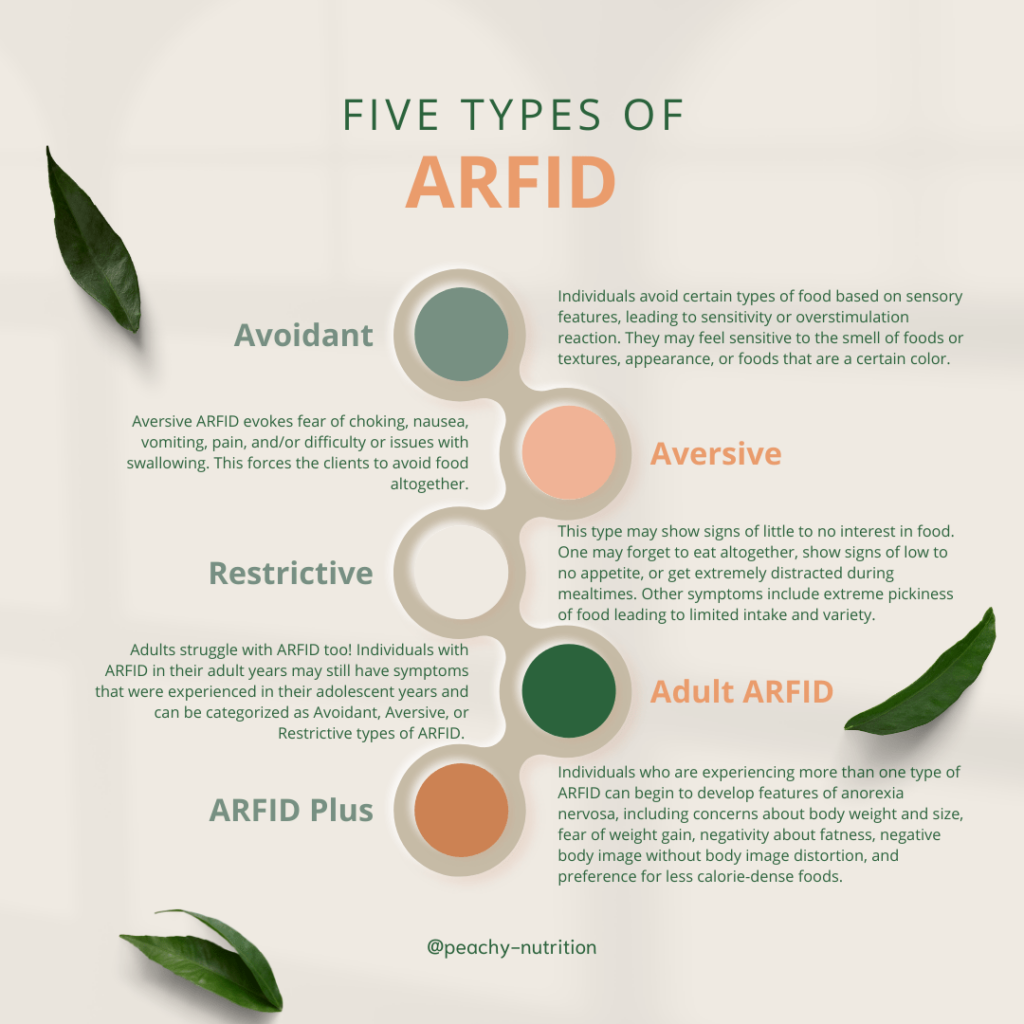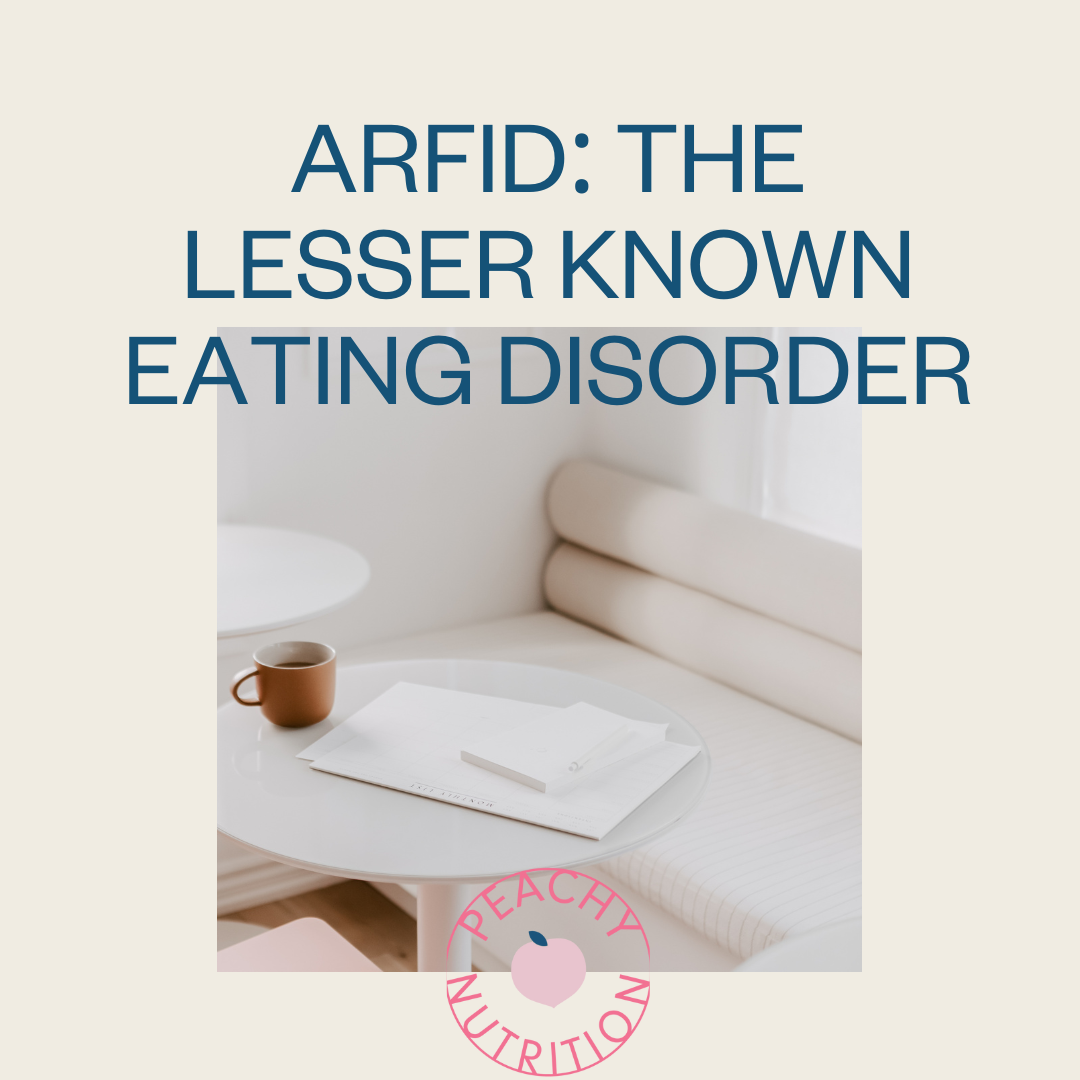
You may have heard of the acronym, ARFID, but may not be sure what it stands for. Or, maybe you’ve never even heard of it. Despite it being the eating disorder of lesser popularity, you likely know people in your life with some serious “picky eating” that you may be unofficially diagnosing by the end of this read.
What is ARFID?
ARFID stands for Avoidant/Restrictive Food Intake Disorder. It was not added into the DSM (Diagnostic and Statistical Manual of Mental Disorders) until 2013 so it is a fairly new diagnosis. Before this, it was known as Selective Eating Disorder (SED). This disorder, by the name, is often thought of as a form of “picky-eating,” but it is so much more complex than this. According to Walden Eating Disorders, ARFID is “an eating disorder characterized by highly selective eating habits, disturbed feeding patterns, or both. It often results in significant nutrition and energy deficiencies, and for children, failure to gain weight”.
My abridged definition that I use to describe ARFID to my clients or their parents is “Selective/picky eating but with fear or anxiety”. Here’s an example: When a person who does not struggle with ARFID is offered a food they do like or usually eat, they are able to sit with it and eat it despite not liking it or try a bit to appease the person serving or for their own curiosity. When in this same situation, a person diagnosed with ARFID may feel anxiety, fear, and/or discomfort being around the food and would likely not be able to try the food or sit with it in front of them.
Signs of Avoidant/Restrictive Food Intake Disorder
Common signs of ARFID include:
- An inability to maintain a healthy weight
- Significant weight loss
- Failure to achieve expected growth or weight progression in adolescence
- Delayed puberty
Symptoms that may be experienced are dehydration, loss of menstrual period (amenorrhea), weakened bones (osteoporosis), slow pulse and/or dizziness, and low energy and fatigue. Individuals often suffer from nutritional deficiency or a dependence on enteral feeding or oral nutrition supplements such as Boost/Ensure or Pediasure. They may also have a noticeable interference with psychosocial functioning such as not being able to eat with friends or outside of the home, only eating foods specific people or restaurants make, and anxiety when eating around others or presented with foods outside of their norm.
ARFID is like anorexia in that it involves limited volume and variety of foods consumed. But unlike anorexia, ARFID does not involve body image distress or fear of weight gain or fatness. A person with ARFID may want to gain weight or to grow and develop like their peers but have too many barriers with food intake making them unable to do so.
Types of ARFID
Like most eating disorders, there are several types of ARFID. These types include avoidant, aversive, restrictive, adult ARFID, and ARFID plus.
-
Avoidant: Avoidant ARFID is the most common type. Individuals avoid certain types of food based on sensory features, leading to sensitivity or over stimulation reaction. They may feel sensitive to the smell of foods, textures including soft foods, fruits, and veggies that have defined textures, appearance, or are a certain color.
-
Aversive: This type of ARFID is when individuals refuse food based on a fear of an adverse reaction. This type evokes a fear of choking, nausea, vomiting, pain, and/or difficulty or issues with swallowing. This forces the individual to avoid food altogether.
-
Restrictive: Those who experience restrictive ARFID may show signs of little to no interest in food. They may forget to eat altogether, show signs of low to no appetite or get extremely distracted during mealtimes. Other symptoms include extreme pickiness of food leading to limited intake and variety.
-
Adult ARFID: Adults struggle with ARFID too, maybe more often than you might think! Individuals with ARFID in their adult years may still have symptoms that were experienced in their adolescent years and can be categorized as Avoidant, Aversive or Restrictive types of ARFID. Common symptoms in adults may include selective or extremely picky eating, food peculiarities, texture, color, or taste aversions related to food.
-
AFRID Plus: Individuals who are experiencing more than one type of ARFID can begin to develop features of anorexia nervosa, including concerns about body weight and size, fear of weight gain, negativity about fatness, negative body image without body image distortion and preference for less calorie-dense foods. This combination of symptoms is categorized as ARFID “Plus,” a co-occurring eating disorder.
Treatment for Eating Disorders
The treatment of ARFID looks different for each type and each individual client. However, it often includes assisting the person with meeting nutrition needs despite limited intake and variety, planned food exposures with nutrition and therapeutic support, and processing fear and/or discomfort around certain foods with a therapeutic team. Food exposures are planned with a curious approach to the food rather an a forceful “you have to eat/try it” approach. This helps the client understand where the aversion stems from, how to successfully reintroduce foods and add new foods into their diet, and helps them feel more comfortable meeting their nutritional needs in any situation.
If you or someone you know is struggling with ARFID, we can help! Please reach out to us at hello@peachy-nutrition.com or schedule a 15- minute discovery call to discuss how we can support you or your loved one on their journey to recovering from Avoidant/Restrictive Food Intake Disorder.
Resources:
https://www.nationaleatingdisorders.org/learn/by-eating-disorder/arfid
https://www.waldeneatingdisorders.com/what-we-treat/arfid/
[/et_pb_text][/et_pb_column][/et_pb_row][/et_pb_section]
